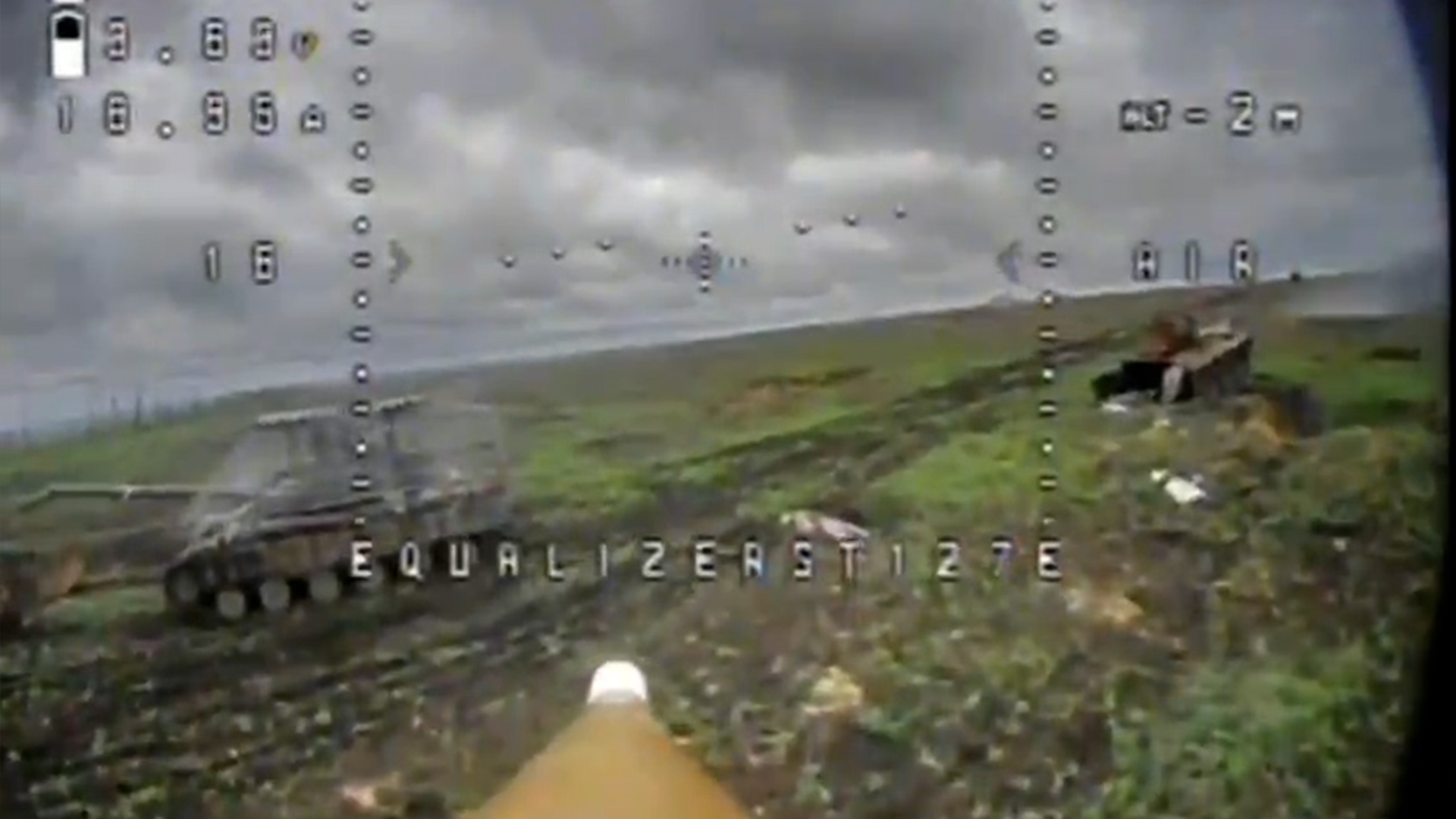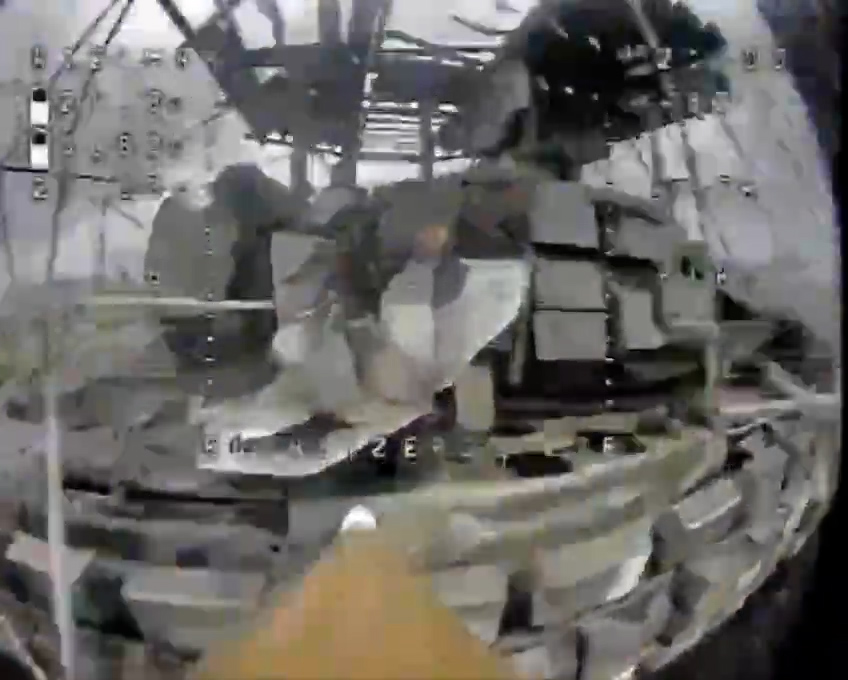
Ukrainian drones use double-tap attack to defeat Russian tanks fitted with metal cages

Footage has emerged on social media of a new tactic Ukrainian drone pilots are using to kill Russian armour – even tanks protected with a so-called 'cope cage'.
Moscow has lost an estimated 3,000 pieces of armour in Ukraine, from tanks to armoured personnel carriers.
Many of them have been destroyed by relatively cheap first-person-view, or FPV, drones costing just a few hundred dollars.
- RAF Typhoons soar into Finland as part of Nato's largest exercise since the Cold War
- Why is Russia launching so many missile strikes on southern Ukrainian port of Odessa?
- Next generation of Ukrainian fighter pilots get to grips with F-16 fighter jet
Footage from the Russian MOD recently showed T-80 main battle tanks rolling off the production line fitted with metal shields above their turrets – a device known as a cope cage – to try to protect them from FPV drones.
Russian tank crews have even resorted to installing log walls around the cage in an attempt to offer even more protection from a side-on attack.
But video on social media claims to show how Ukrainian drones are getting around it – by hitting the tanks with a 'double-tap' technique.
In the footage, what’s claimed to be a Soviet-era T-64BV tank is singled out by a pair of Ukrainian kamikaze drones as it speeds along a dirt track near Bilohorivka on the eastern front.
The footage is grainy, but it appears as if the tank's entire turret is encased in either netting or wire mesh.
Theoretically, these shrouds will trigger the drone's warhead slightly away from the hull, reducing the damage, or in a best-case-scenario catch the drone, stopping it from exploding at all.
On this occasion though neither of those things happened.
The first drone targets the side of the turret, and its two fuse activators – the wire 'spears' poking out the front of the drone – can be clearly seen as it flies in and detonates.
It is hard to tell from the footage, but the T-64 does not appear to be carrying any external jamming equipment like the RP-377, a portable jammer that the Russian military developed to scramble enemy communications and protect vehicles from FPV drones.

These are now factory-fitted to some vehicles like the T-80BVM tank, but the Ukrainians have developed new drones, fitted with automatic lock-on, to counter jamming.
These allow the UAV to fly to the target even if it loses radio connection with the operator.
In the footage, the first drone appears to 'soften' up the target, peeling back the cage, before a second slams into the same part of the turret.
The second drone appears to be carrying a rocket-propelled-grenade, most likely a Russian-made PG7-VL high explosive anti-tank (Heat) round.
The RPG's 2.6kg shaped charge punches its way into the hull, setting off a catastrophic explosion.
The T-64 was the first Soviet-era tank to be fitted with an auto-loader, a system to increase the tank's rate of fire.
Rounds are stored in a carousel on the hull floor and automatically fed into the tank's gun.
This means the T-64 can move and fire at a much faster rate – five to eight rounds a minute – but with so much high explosive stored beneath the turret, it also makes it hugely vulnerable to top-down attacks, something Ukrainian FPV pilots clearly know very well.









